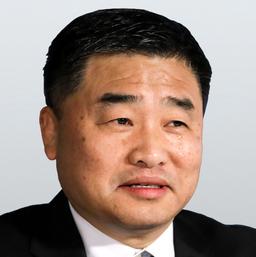SAN JOSE, Calif.—In an April 15 meeting, two Santa Clara County supervisors voted to delay a decision on adopting ranked-choice voting (RCV), citing the complexity of implementation and concerns over funding.
The matter is now postponed until at least late September, when the availability of future federal funding is expected to become clearer.
The motion to delay came from Supervisor Betty Duong of District 2 and Supervisor Susan Ellenberg of District 4, during a session of the county’s Finance and Government Operations Committee.
“I’m neither firmly for nor against ranked-choice voting,” Duong said during the meeting. “But I do believe we need more time for a thorough analysis and preparation to ensure any implementation is done responsibly.”
Ellenberg expressed reservations mainly over the financial implications, noting that the county could face cuts in federal aid that would strain its ability to fund a new voting system.
“It’s not just about policy preference—it’s about fiscal prudence,” she said.
RCV is an alternative election method that allows voters to rank multiple candidates in order of preference—first choice, second choice, third, and so on. There are variations in how it works, but generally, if no candidate wins a majority of first-choice votes, the candidate with the fewest first-choice votes is eliminated. The first-choice votes for that candidate are then redistributed to other candidates based on those voters’ second choices. This process repeats until one candidate secures a majority.
RCV is designed to eliminate the need for separate runoff elections and to ensure that the winning candidate has broad support.
Advocates say it reduces negative campaigning, encourages a wider range of candidates, and strengthens voter engagement. Critics argue that the system can be confusing and costly to implement and may lead to outcomes where the plurality winner is not the final victor.
At the meeting, the supervisors focused on logistical and budgetary concerns, while members of the public talked in depth about the political implications of the proposed system. More than 50 residents offered public comments during the meeting—either in person or virtually—with arguments on both sides of the issue.
Supporters of RCV said the system promotes more democratic outcomes by allowing voters to rank candidates in order of preference, potentially increasing representation for minority candidates and reducing the need for costly runoffs.
“We need a system that gives voters more voice and more choice,” one speaker said. “Ranked-choice voting helps reduce strategic voting and gives everyone a fair shot.”
Opponents, however, expressed concern about unintended consequences and said the election process that already exists is reliable.
“Ranked-choice voting removes the fundamental principle of one person, one vote,” said county assessor Larry Stone. “It’s confusing, it’s expensive, and it can result in winners who did not receive the most votes overall.”
The meeting grew tense at times, prompting Duong to briefly pause proceedings to restore order. Some attendees held signs that read “Hands Off County Elections,” signaling grassroots opposition.
Santa Clara County is considering joining a growing number of jurisdictions nationwide that have adopted ranked-choice voting, including San Francisco, Oakland, and several other localities across the country.







